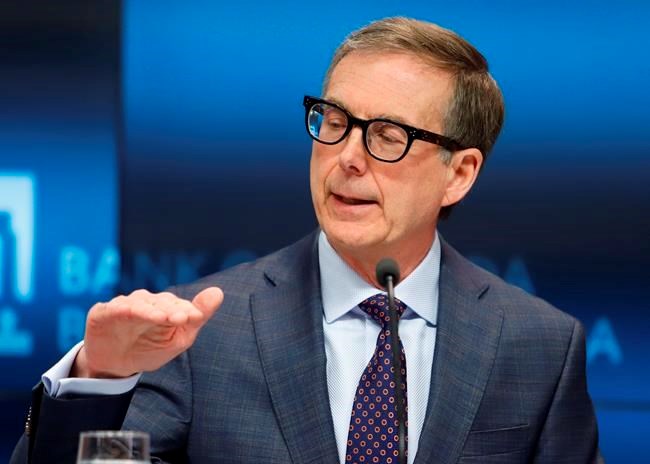OTTAWA — The Bank of Canada's governing council considered waiting until July to raise interest rates, but ultimately decided to act sooner in the face of hot economic data.
The central bank released Wednesday its summary of deliberations for its June interest rate announcement, shedding light into the decision to raise its key interest rate by a quarter of a percentage point to 4.75 per cent.
That’s the highest it’s been since 2001.
The rate hike came after the central bank declared a pause earlier in the year, appearing cautiously optimistic that interest rates were high enough to quash inflation.
But the Bank of Canada says the decision to raise rates was prompted by a recent string of economic data that showed the annual inflation rate ticked higher and consumer spending was more resilient than expected.
Those numbers reinforced concerns among members of the governing council that higher interest rates were needed to cool inflation.
Members of the governing council, which include the governor and the central bank's deputy governors, considered whether they should raise interest rates immediately or signal that a rate hike was likely in July.
Waiting would give them more data to look at before raising rates again, the central bank said.
"On the other hand, members felt that enough data had accumulated to convince them that more restrictive policy was needed. Therefore, it was preferable to take the required action and continue to assess economic developments to guide future actions," the summary says.
The rate hike came after data showed inflation rose slightly to 4.4 per cent in April, while the economy grew faster than expected in the first quarter.
Consumer spending was particularly strong, rising 5.8 per cent in the first three months of the year.
Retail numbers released by Statistics Canada on Wednesday also show consumer spending grew faster than expected in April, rising 1.1 per cent.
The labour market has also remained exceptionally tight, though data released after the rate hike showed the unemployment rate ticked higher to 5.2 per cent in May.
The Bank of Canada has not indicated whether it plans to raise interest rates again on July 12 and says its governing council will make the decision based on incoming data.
However, many forecasters are expecting another rate hike, noting the central bank will want to double down on its effort to take the steam out of the economy.
This report by The Canadian Press was first published June 21, 2023.
Nojoud Al Mallees, The Canadian Press



